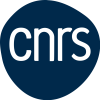Laser-plasma interaction in the framework of advanced ICF schemes
Special attention has been paid to the so-called shock ignition scheme. In this scheme, compression of the fuel pellet is ensured by laser irradiation at lower intensity and longer duration than in the nominal scheme, while ignition is independently achieved thanks to a strong shock launched by a delayed short laser pulse at intensity 10 times higher. Kinetic effects become thus dominant and large-scale laser-plasma interaction kinetic simulations essential.
TIPS was the first team to perform multi-dimensional kinetic simulations of a full speckle in a high-temperature, long inhomogeneous plasma. It was shown that, in these conditions, although the two-plasmon decay instability develops in concomitance with Stimulated Raman Scattering, it is active only during the first picoseconds of the interaction, before being rapidly saturated due to plasma cavitation.
In addition, absorption is then governed by collisionless collective processes. These results are extremely encouraging since uncontrolled growth of parametric instabilities is one of the issues for the shock ignition scheme.

Relevant publications
- B.I. Cohen et al., Phys. Plasmas 16, 089902 (2009)
- D. Pesme et al., Phys. Plasmas 16, 089903 (2009)
- O. Klimo et al., Phys. Plasmas 18, 082709 (2011)
- C. Riconda et al., Phys. Plasmas 18, 092701 (2011)
- S. Weber et al., Phys. Rev. E 85, 016403 (2012)




